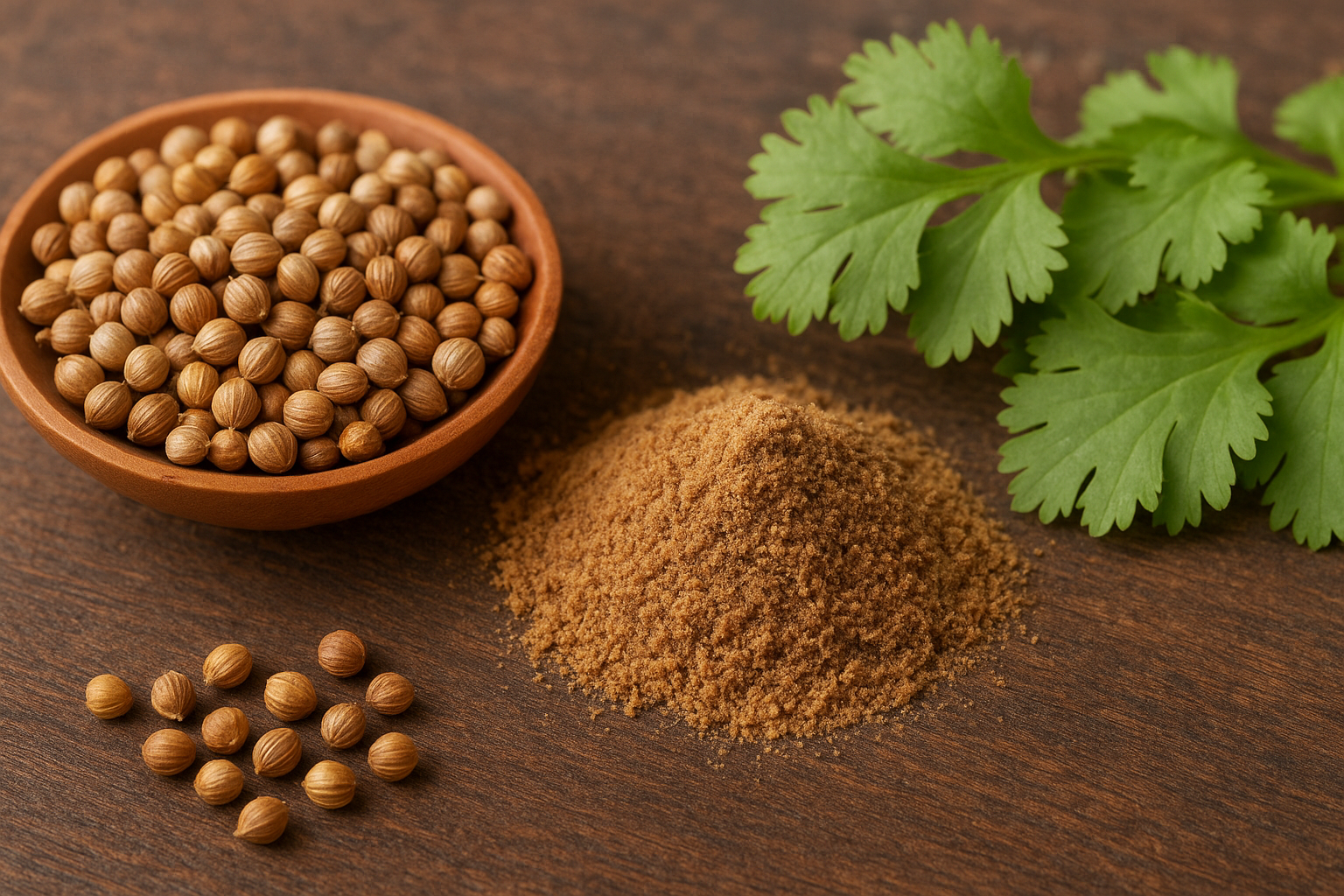What is Koriandri?
People have been using Koriandri as food and spice since ancient times, and it is still important today. In some places, people call it Koriandri, in others coriander or cilantro. No matter the name – it is the same plant with green leaves and small seeds. Koriandri is both a herb and a spice, and many cultures around the world appreciate it for its special taste and useful qualities.
This article explains everything you need to know about Koriandri: what it looks like, where it grows, how it is used, and why it is so valuable.
What Does Koriandri Look Like?
The Koriandri plant is easy to recognize. It has soft green leaves that look a little like parsley. But when you smell or rub the leaves, you notice the difference: Koriandri has a fresh, spicy, and sometimes lemony scent.
It can grow up to 60 cm tall and produces small white or pink flowers. After blooming, the little flowers change into small round seeds known as Koriandri.
Where Does Koriandri Grow?
The first Koriandri plants grew in warm parts of Asia and around the Mediterranean Sea. Today, it is grown almost everywhere – Europe, Africa, the Americas, and even Australia.
It loves sunlight and grows best in soft, rich soil. Many people also grow Koriandri in small pots at home, because it is very easy to take care of.
Koriandri in the Kitchen
One of the main reasons why people love Koriandri is its unique flavor. It can be used in two different ways:
- Fresh leaves: Often called “Koriandri greens.” They are sprinkled over soups, salads, and cooked meals.
- Seeds: Dried and ground seeds taste warm, slightly sweet, and spicy. They are used in bread, sauces, and many spice mixes.
Why is Koriandri Popular?
Koriandri is not only tasty but also healthy. Official health reports show that it is rich in vitamins (like Vitamin C and K) and minerals (like iron and magnesium).
The leaves contain essential oils that give the special aroma. These oils can help with digestion and may even boost appetite.
The Unique Taste of Koriandri
Some people love Koriandri immediately, while others need time to enjoy it. The reason is simple: its flavor is very strong. Researchers found that a few people have unique genes that make Koriandri taste like soap instead of fresh herbs.
Still, it remains one of the most used herbs in the world.
Koriandri Around the World
Different countries use Koriandri in different ways:
| Region | Use of Koriandri |
|---|---|
| Asia | Fresh leaves in soups and noodles |
| Europe | Seeds in bread, sausages, and sauces |
| South America | Fresh leaves in sauces and salsas |
| Middle East | Seeds in spice blends and stews |
This shows how Koriandri connects people around the globe.
Growing Koriandri at Home
Many families grow Koriandri at home because it is easy and fun. Even a small pot is enough. Within weeks, you can harvest fresh leaves. Children especially enjoy watching it grow and using it fresh in meals.
Koriandri in History
Koriandri is not a new discovery. Ancient Egyptians, Greeks, and Romans already used it. Seeds of Koriandri were even found in old tombs, showing how valuable it was thousands of years ago.
Koriandri and Health Benefits
According to official reports, Koriandri contains many beneficial nutrients. It cannot replace medicine, but it supports a healthy diet. Its vitamins, minerals, and oils make it a natural helper for the body.
| Nutrient in Koriandri | Benefit |
|---|---|
| Vitamin C | Strengthens the immune system |
| Vitamin K | Supports healthy bones and blood |
| Iron | Helps in making healthy red blood cells |
| Magnesium | Important for muscles and energy |
Read More: Fascisterne Meaning, History, and Why It Still Matters Today
Why Koriandri is Special
Koriandri is more than just a plant. It is a connection between culture, history, taste, and health. It grows easily, can be used in many dishes, and has been loved for thousands of years.
Conclusion: The World of Koriandri
Koriandri is a small plant with a big story. It grows across continents, has been used for thousands of years, and makes our food more delicious and nutritious.
Whether in cooking, gardening, or history, Koriandri proves how important plants are to human life. Its green leaves and round seeds make it a treasure of nature.
Next time you see or taste Koriandri, remember: this plant is not just about flavor – it carries knowledge, culture, and tradition.
Another Topic To Read: Simpciry Your Easy Guide to Kindness and Happiness
FAQs About Koriandri
Q1. What is Koriandri?
Koriandri is another name for the coriander plant (Coriandrum sativum). It is used as both a herb (leaves) and a spice (seeds) in cooking.
Q2. Why is Koriandri important in food?
Koriandri adds a fresh, lemony flavor to dishes. The leaves are used for garnishing, while the seeds give a warm, spicy taste.
Q3. Is Koriandri healthy to eat?
Yes, Koriandri is rich in vitamins and minerals like Vitamin C, Vitamin K, iron, and magnesium. It supports digestion and adds natural nutrition to meals.
Q4. Can I grow Koriandri at home?
Absolutely! Koriandri grows well in pots or gardens with sunlight and regular watering. Within a few weeks, fresh leaves can be harvested.
Q5. Why do some people say Koriandri tastes like soap?
Some people have special genes that make the fresh leaves of Koriandri taste soapy. For most people, it tastes fresh and delicious.


